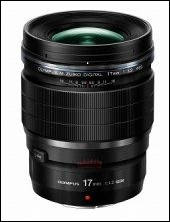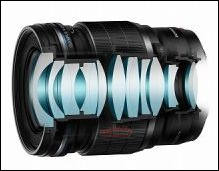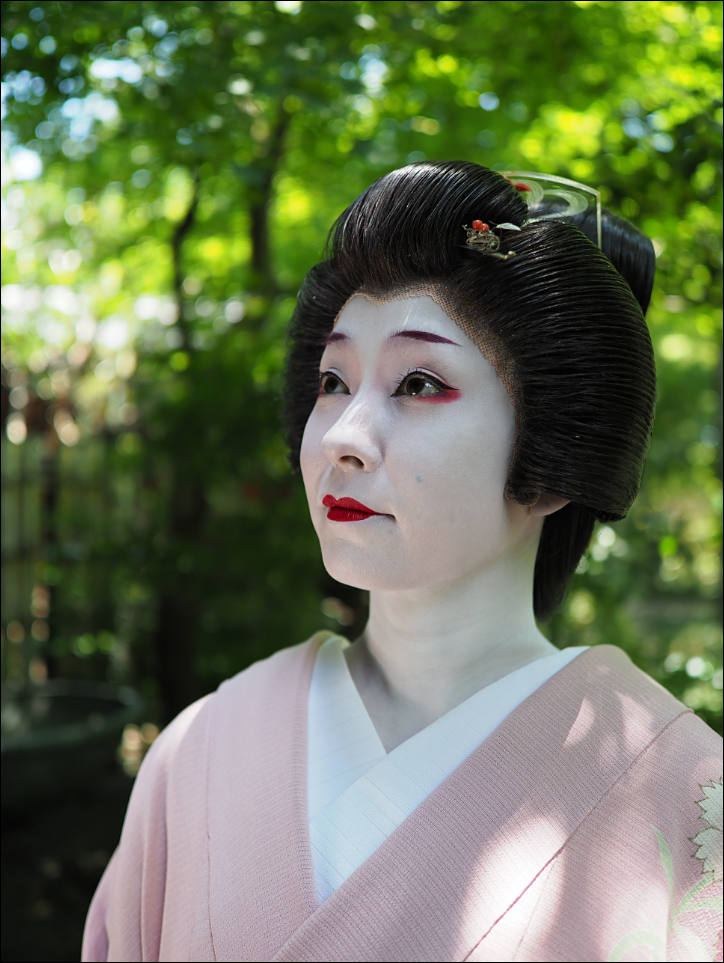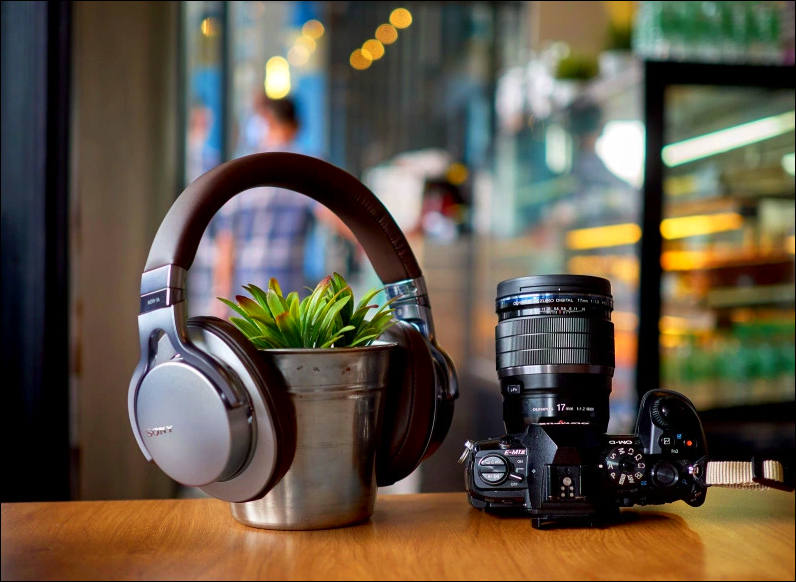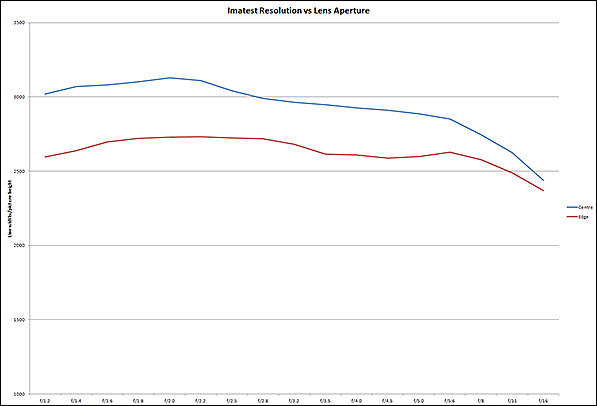
It allows to keep PV going, with more focus towards AI, but keeping be one of the few truly independent places.
-
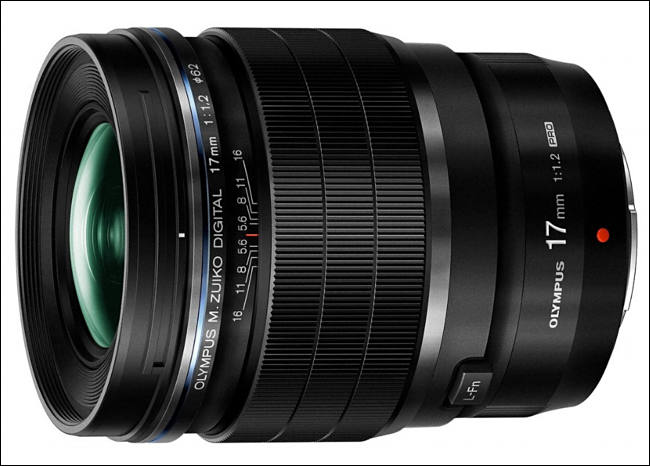
Specs
- 15 elements in 11 groups, 1 Super ED, 3 ED, 1 ED-DSA, 1 EDA, 1 Super HR, 1 aspherical
- F16 minimum aperture
- 9 diaphragm blades
- 20cm min focusing distance
- 62mm filters
- stepper motor autofocus
- full time manual override
- 390 g
- 68mm * 87mm
- Magnesium alloy
- Weather sealed
- Lens hood included
- Available late January 2018
- $1,199.99

 s344.jpg432 x 638 - 33K
s344.jpg432 x 638 - 33K
 sa183.jpg650 x 466 - 46K
sa183.jpg650 x 466 - 46K -
That looks odd - a very fast 17mm lens with such a tiny front element?
-
Specs
- Filter diameter: 62 mm
- Size: 70 x 84.9 mm
- Weight: 410 g
- Retail price: 142,560 yen (tax included)
-
The 17mm f/1.2 will cost 1199€ and start to ship out in January.
-
PR
Olympus expands its M.ZUIKO F1.2 PRO prime lens lineup with the new M.ZUIKO Digital ED 17mm F1.2 PRO (34mm focal length in 35mm equivalent) and the M.ZUIKO Digital ED 45mm F1.2 PRO (90mm focal length in 35mm equivalent). These Micro Four Thirds® system lenses join the currently available M.ZUIKO Digital ED 25mm F1.2 PRO (50mm focal length in 35mm equivalent) to deliver outstanding resolution and beautiful feathered bokeh at a maximum aperture of F1.2.
The M.ZUIKO Digital ED 17mm F1.2 PRO and M.ZUIKO Digital ED 45mm F1.2 PRO give M.ZUIKO PRO lens users more flexibility in low-light environments as well as an extraordinarily shallow depth-of-field. Each is designed to achieve a new level of depictive performance, delivering three-dimensional images that represent subjects as they appear in the real world through a combination of feathered bokeh and sharp resolution.
By focusing not only on the bokeh’s size but also its quality, each lens produces a feathered bokeh effect that better emphasizes the main subject and allows it to stand out within the image. The shallower depth of field produced at F1.2 is especially ideal for portrait photographers.
The newly developed ED-DSA lens, which possesses the characteristics of both an ED (Extra-low Dispersion) lens element and a DSA (Dual Super Aspherical) lens element, is incorporated in the M.ZUIKO Digital ED 17mm F1.2 PRO. The ED-DSA lens compensates for common wide-angle lens issues, including chromatic aberrations, distortion and color bleeding on the image periphery.
Like other lenses in the M.ZUIKO PRO series, the M.ZUIKO Digital ED 17mm F1.2 PRO and M.ZUIKO Digital ED 45mm F1.2 PRO feature compact, lightweight construction and a dustproof, splashproof, freezeproof (to 14°F/-10°C) design, giving photo enthusiasts and professionals the ability to capture brilliant images in a variety of shooting conditions.
U.S. Pricing and Availability
The M.ZUIKO Digital ED 45mm F1.2 PRO will be available late November 2017, while the M.ZUIKO Digital ED 17mm F1.2 PRO will be available late January 2018. Both lenses will have an estimated street price of $1,199.99 USD/$1,499.99 CAD. For a complete list of specifications for the M.ZUIKO Digital ED 45mm F1.2 PRO, visit the Olympus website: http://getolympus.com/lenses/m-zuiko-ed-45mm-f1-2-pro.html, and for the M.ZUIKO Digital ED 17mm F1.2 PRO lens, visit http://getolympus.com/lenses/m-zuiko-ed-17mm-f1-2-pro.html.
Main Features
Depictive performance that delivers feathered bokeh and outstanding resolution
Feathered bokeh provides an ultra smooth transition from the sharp to the defocused areas of the image to provide an overall softer background. This results in a subject that stands out with lifelike dimensionality.
In the M.ZUIKO Digital ED 17mm F1.2 PRO, there are 15 elements in 11 groups, including specialized lens elements like the newly developed ED-DSA lens. The ED-DSA lens element, which possesses the characteristics of both an ED (Extra-low Dispersion) lens and DSA (Dual Super Aspherical) lens, reduces the overall weight and the number of lens elements. This design effectively compensates for various types of aberrations that tend to occur in wide-angle lenses, such as chromatic aberration, distortion and color bleeding on the image periphery (magnification chromatic aberration).
The M.ZUIKO Digital ED 45mm F1.2 PRO contains three optimally placed and bonded lens elements, including one ED lens, which compensate for typical problems on wide-aperture lenses like out-of-focus color bleeding (axial chromatic aberration) and peripheral color bleeding (magnification chromatic aberration). The extensive use of special lenses incorporated into 14 elements in 10 groups results in superb optical performance and feathered bokeh effects, even at the widest aperture setting.
Both lenses use the same Z Coating Nano technology as the M.ZUIKO Digital ED 25mm F1.2 PRO for sharp, clear image quality that significantly reduces ghosts and flares that tend to occur in backlit images.
Fast, high-precision AF
Both lenses are equipped with the MSC (Movie- and Still-Compatible) autofocus mechanism that provides virtually silent and smooth high-speed focusing performance, even when using the maximum aperture of F1.2. Additionally, there are no AF point limitations, even at the widest aperture, due to the On-Chip AF system in all Olympus OM-D® and PEN® cameras.
Using Face Priority or Eye Priority AF, two modes which are highly regarded by professional portrait photographers, brings out the true power of these large-aperture lenses.
Compact, lightweight construction and dustproof, splashproof and freezeproof (14°F/-10°C) performance
The M.ZUIKO PRO F1.2 prime lens lineup is exceptionally compact, lightweight and provides unrivaled mobility, dustproof, splashproof and freezeproof (14°F/-10°C) performance consistent with the M.ZUIKO PRO series. A uniform lens filter diameter across the three F1.2 lenses allows for use of the same lens filters, such as protection filters and PL filters.
Other Features
Excellent close-up shooting: The M.ZUIKO Digital ED 17mm F1.2 PRO has a minimum focusing distance of 20 cm and a maximum image magnification of 0.15x (35mm equivalent: 0.3x), while the M.ZUIKO Digital ED 45mm F1.2 PRO has a minimum focusing distance of 50 cm and a maximum image magnification of 0.1x (35mm equivalent: 0.2x), providing outstanding close-up shooting performance.
Premium design: Each lens was designed with the professional photographer in mind. The focusing ring placed at the front of the lens makes focusing easier when paired with the large grip of the flagship OM-D E-M1 Mark II camera. The L-Fn Button is located on a gently curving surface to make it comfortable to access. The MF Clutch mechanism allows the photographer to instantly switch between auto and manual focusing mode by pulling the focusing ring toward the camera body.
-

 sa186.jpg789 x 578 - 72K
sa186.jpg789 x 578 - 72K -

 sa222.jpg724 x 963 - 98K
sa222.jpg724 x 963 - 98K -
Samples look really good.
-
Is this focus by the wire?
-
Check PR
The MF Clutch mechanism allows the photographer to instantly switch between auto and manual focusing mode by pulling the focusing ring toward the camera body.
It is same as other Pro lenses.
-
Our PhotoPlus video
-
Our photos
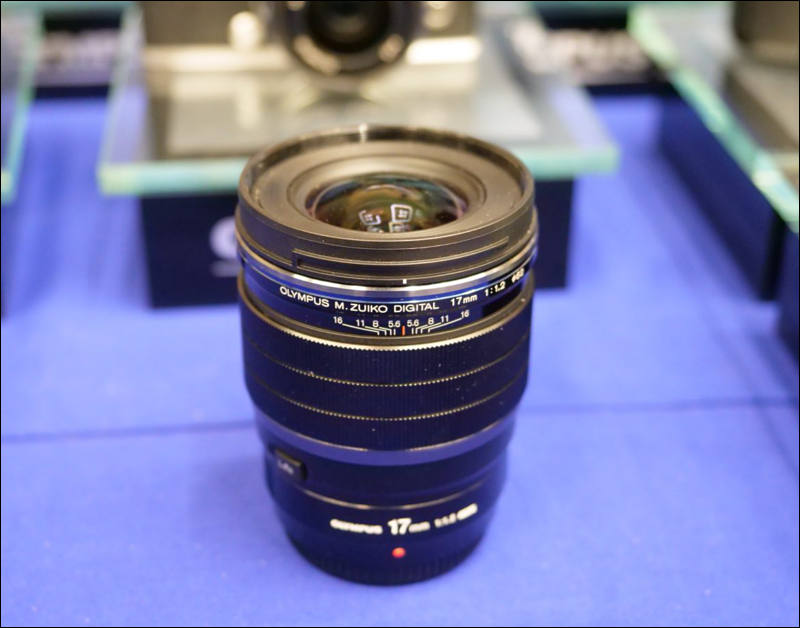
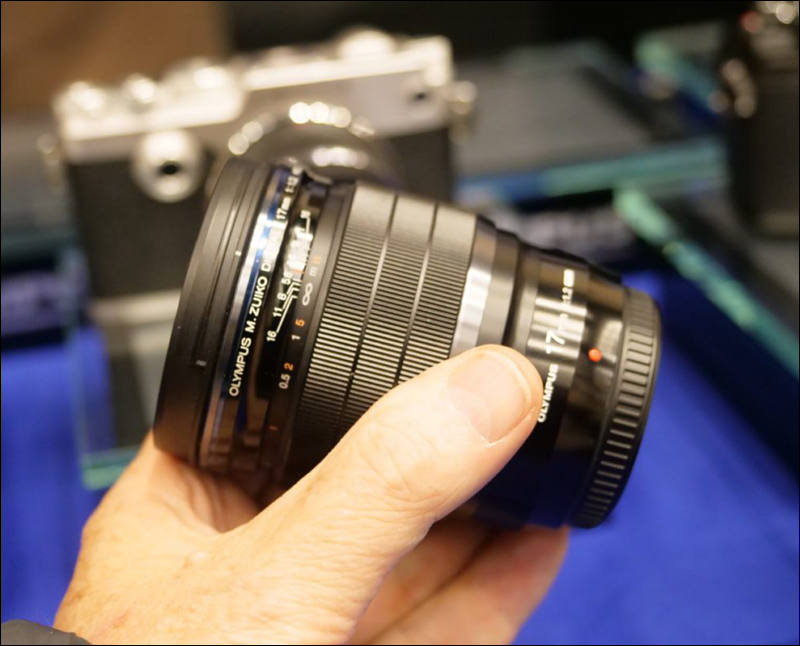
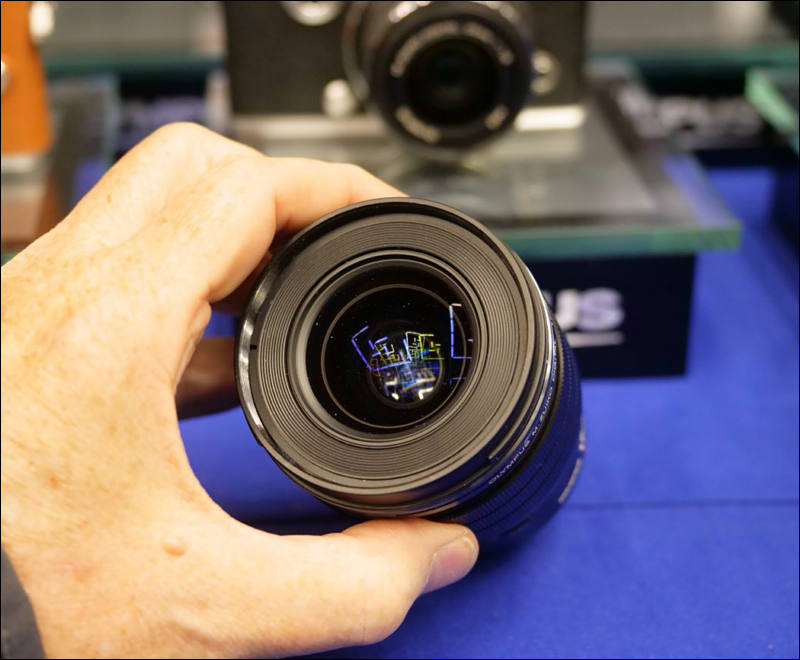

 sa376.jpg800 x 628 - 57K
sa376.jpg800 x 628 - 57K
 sa377.jpg800 x 646 - 60K
sa377.jpg800 x 646 - 60K
 sa378.jpg800 x 660 - 67K
sa378.jpg800 x 660 - 67K -
Wonder how the Olym 17 1.2 would compare in IQ to the Voigtlander 17 .95?
-

 sa629.jpg800 x 531 - 51K
sa629.jpg800 x 531 - 51K -

 sa852.jpg795 x 596 - 72K
sa852.jpg795 x 596 - 72K -
Samples

http://www.imaging-resource.com/lenses/olympus/17mm-f1.2-pro-m.zuiko-digital-ed/gallery-images/

 sa908.jpg800 x 549 - 63K
sa908.jpg800 x 549 - 63K -

 sa921.jpg800 x 601 - 86K
sa921.jpg800 x 601 - 86K -
Review

Center sharpness is outstanding even when shooting wide-open at f/1.2, so you confidently shoot at any aperture except f/16, which suffers a little from diffraction. Impressively, the edges are just as sharp as the center, with f/1.2-f/11 again producing the sharpest results.
http://www.photographyblog.com/reviews/olympus_m_zuiko_digital_ed_17mm_f_1_2_pro_review

 sa1271.jpg800 x 551 - 48K
sa1271.jpg800 x 551 - 48K -

 sa1274.jpg796 x 582 - 74K
sa1274.jpg796 x 582 - 74K -

 sa1506.jpg797 x 595 - 52K
sa1506.jpg797 x 595 - 52K -

 sa1570.jpg598 x 449 - 43K
sa1570.jpg598 x 449 - 43K
 sa1569.jpg597 x 406 - 23K
sa1569.jpg597 x 406 - 23K
Howdy, Stranger!
It looks like you're new here. If you want to get involved, click one of these buttons!
Categories
- Topics List23,979
- Blog5,725
- General and News1,352
- Hacks and Patches1,153
- ↳ Top Settings33
- ↳ Beginners255
- ↳ Archives402
- ↳ Hacks News and Development56
- Cameras2,362
- ↳ Panasonic991
- ↳ Canon118
- ↳ Sony156
- ↳ Nikon96
- ↳ Pentax and Samsung70
- ↳ Olympus and Fujifilm100
- ↳ Compacts and Camcorders300
- ↳ Smartphones for video97
- ↳ Pro Video Cameras191
- ↳ BlackMagic and other raw cameras116
- Skill1,961
- ↳ Business and distribution66
- ↳ Preparation, scripts and legal38
- ↳ Art149
- ↳ Import, Convert, Exporting291
- ↳ Editors191
- ↳ Effects and stunts115
- ↳ Color grading197
- ↳ Sound and Music280
- ↳ Lighting96
- ↳ Software and storage tips267
- Gear5,414
- ↳ Filters, Adapters, Matte boxes344
- ↳ Lenses1,579
- ↳ Follow focus and gears93
- ↳ Sound498
- ↳ Lighting gear314
- ↳ Camera movement230
- ↳ Gimbals and copters302
- ↳ Rigs and related stuff272
- ↳ Power solutions83
- ↳ Monitors and viewfinders339
- ↳ Tripods and fluid heads139
- ↳ Storage286
- ↳ Computers and studio gear560
- ↳ VR and 3D248
- Showcase1,859
- Marketplace2,834
- Offtopic1,319


